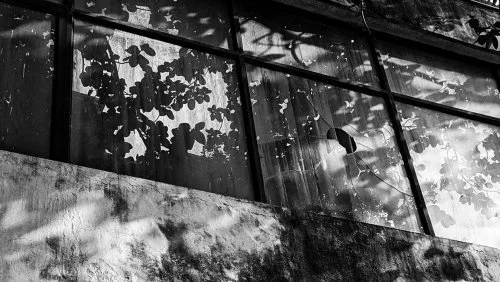Delhi University & the Rise of a Necropolis
B Madhavan | 17 September 2023 | Mainstream
Broken glass panes at the conference hall at Ramjas College, from the attack on the ‘Cultures of Protest’ seminars in 2017 | Photo: B. Madhavan
It’s been roughly 6 months since Delhi University replaced half of its teaching faculty. When this shameful process came to the doorstep of my department, it was the winter semester exams. It was also my first winter ever, covered in multiple layers and I still couldn’t protect myself from a shiver running through my body from the cold fear of losing some very good teachers.
Prime Minister Narendra Modi visited the north campus [1] and gave a speech fit for a showman at the university’s centenary celebrations. He talked about how cool the Chai, Momos and aesthetics were at the University of Delhi The Prime Minister’s security also deemed it necessary to remove the street vendors, whom students relied on for meals, thus robbing them of a day’s honest work. The whole campus was turned into a cantonment and detained student activists [2]. With our Prime Minister, his silences speak more loudly than his words ever could.
Standing in an auditorium near Hindu college, he chose to forget that Samarveer Singh who taught philosophy there had died by suicide [3] less than 2 months before his visit. He would not speak about the Ad-Hoc teachers who were thrown out of their jobs, under his watch - almost 1044 in number [4] and counting. Samarveer was one of them. What has been happening since last the month of September of 2022 is perhaps one of the most prominent academic labour force massacres ever, in the history of higher education.
Even with all these excesses, the prime minister only sang paeans about a university whose destruction I and my fellow students witnessed.


